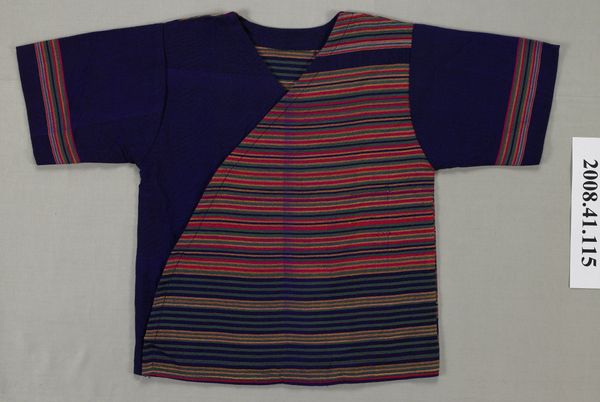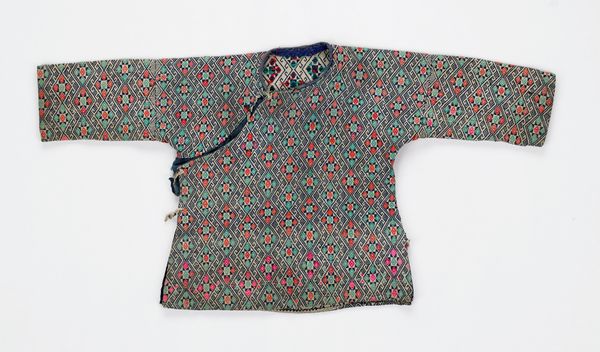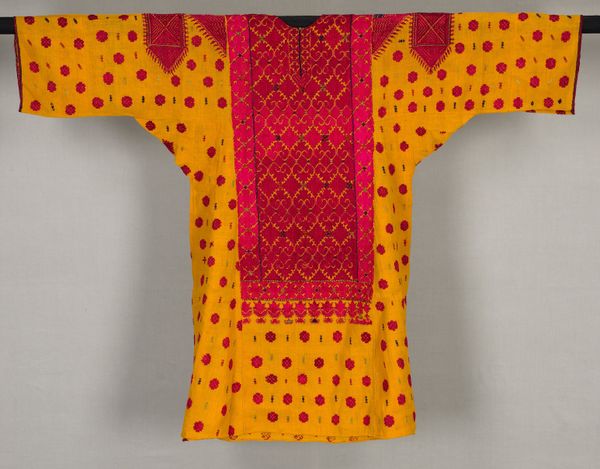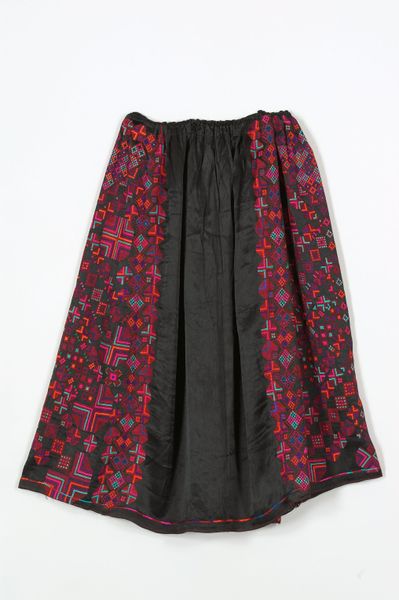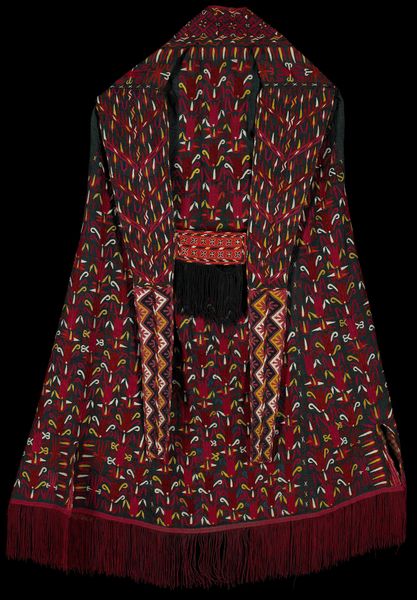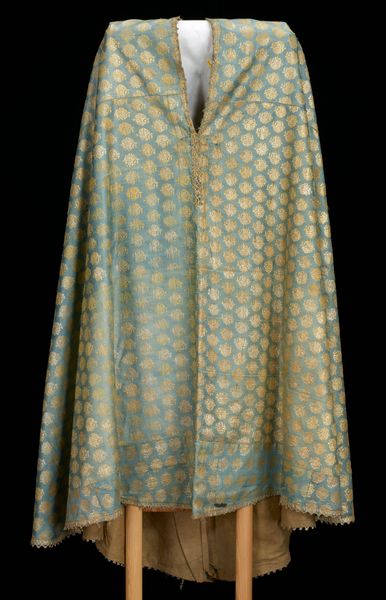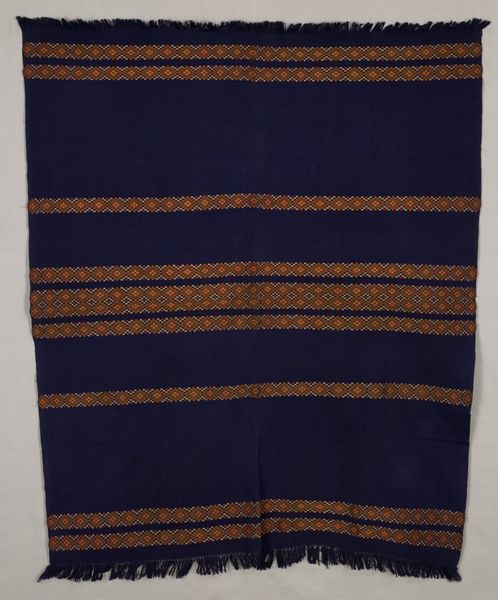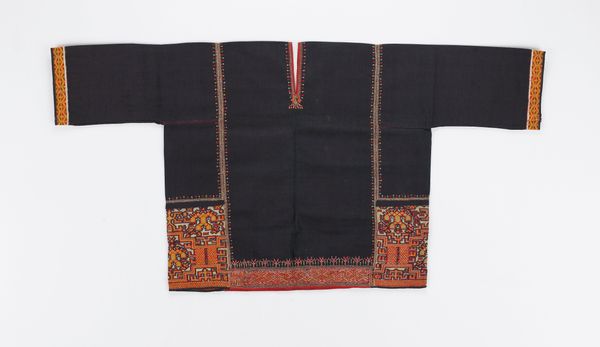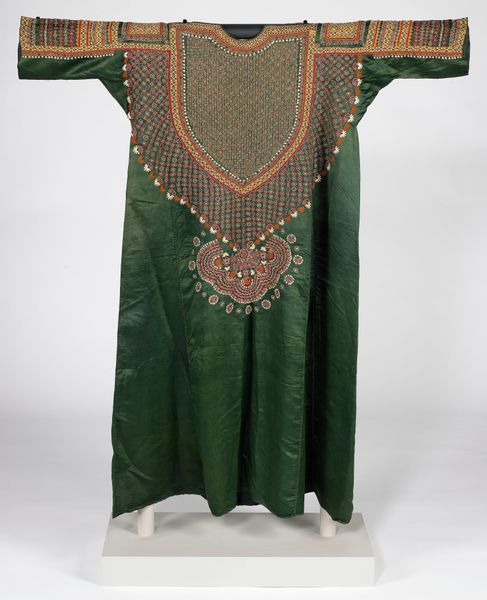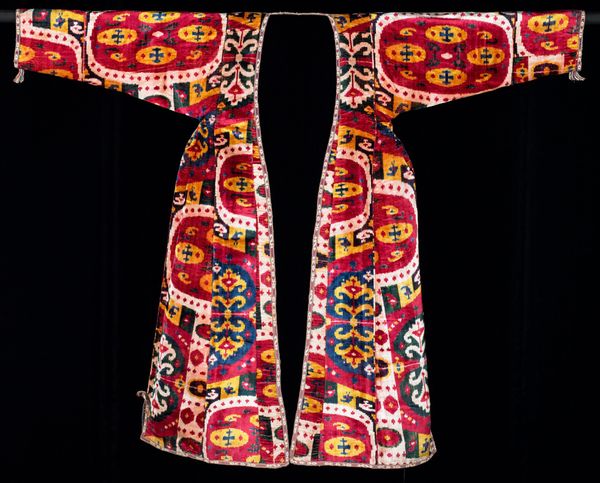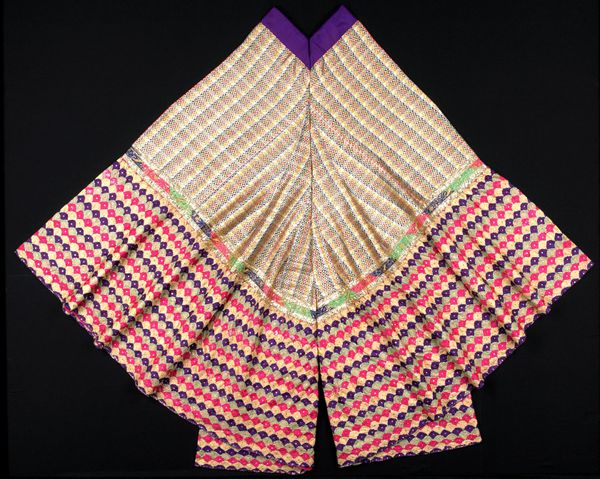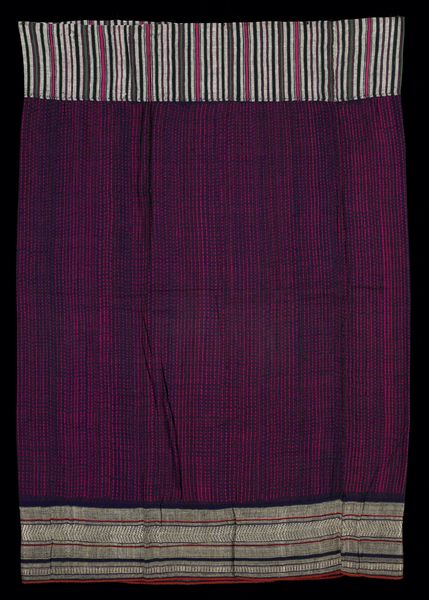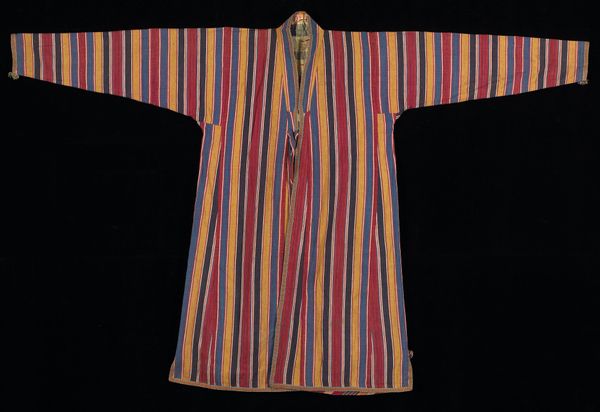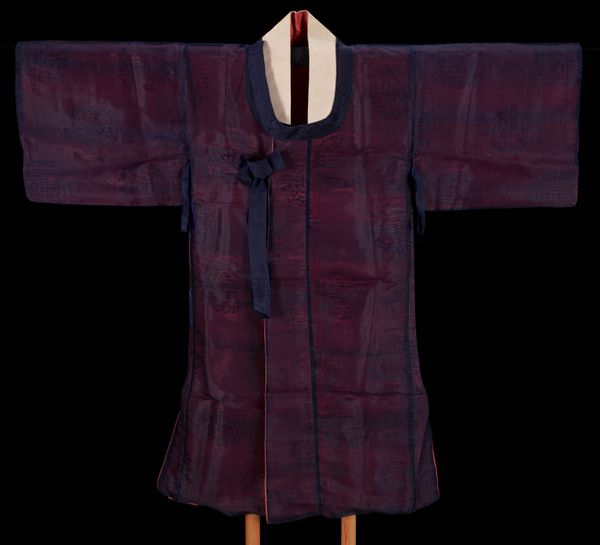
weaving, textile
#
african-art
#
weaving
#
textile
#
geometric
#
textile design
Dimensions: 49 × 118 in. (124.46 × 299.72 cm) (approx.)
Copyright: Public Domain
Editor: So, this magnificent ‘Robe’, created around the late 19th century by a Hausa or Nupe artist, uses cotton, silk and weaving. The geometric patterns, the bold blocks of colour…it all feels incredibly powerful. What do you make of this, especially within its cultural context? Curator: Isn’t it extraordinary? I see this ‘Robe’ not merely as clothing, but as a statement. The bold geometry, that emerald appliqué against the vertical stripes – they whisper of status, of Islamic artistry, but also of individuality. Imagine the weaver, carefully interweaving silk and cotton, almost like threads of stories and identity. It seems a dialogue with tradition, wouldn't you agree? Editor: I can see that, the “threads of stories” idea makes a lot of sense! Do you think the specific choice of those striking emerald and purple colors have some special cultural meaning or symbolic function? Curator: Colors do carry weight, don’t they? Emerald can symbolize growth, spiritual awareness, a connection to the natural world. Purple is also related to spirituality, or even healing and wealth. How delicious, this vibrant combination speaking quietly! But how do these materials connect the artistic tradition? Editor: That's a really wonderful interpretation of their symbology. This feels deeply special, considering the detailed labor to produce such refined cloth in that context. Thanks, that's given me so much to think about. Curator: And you’ve sparked an image in my mind's eye of the wearer -imagine the presence this robe might embody! This textile really invites a journey of cultural curiosity, doesn't it?
Comments
No comments
Be the first to comment and join the conversation on the ultimate creative platform.
